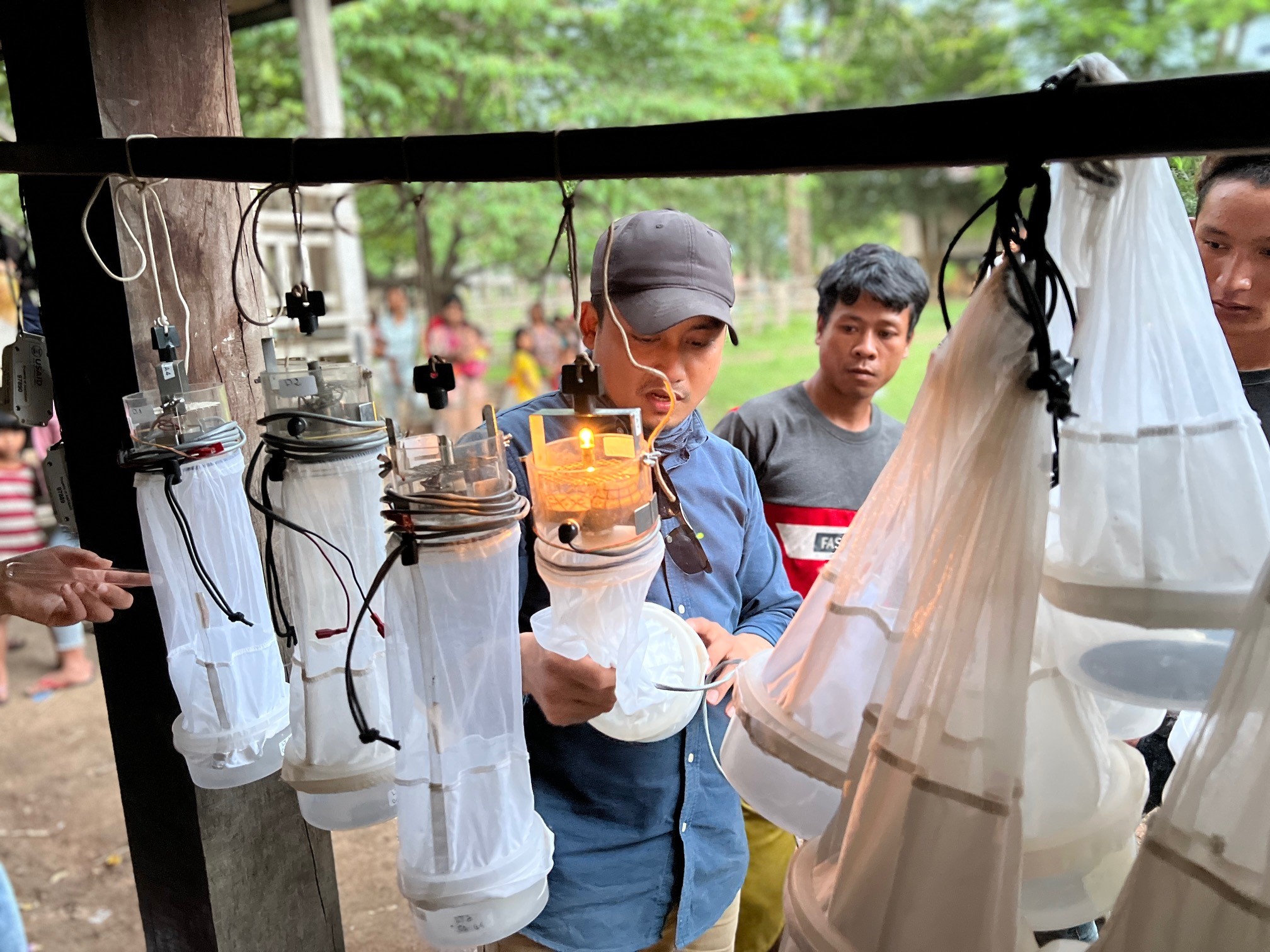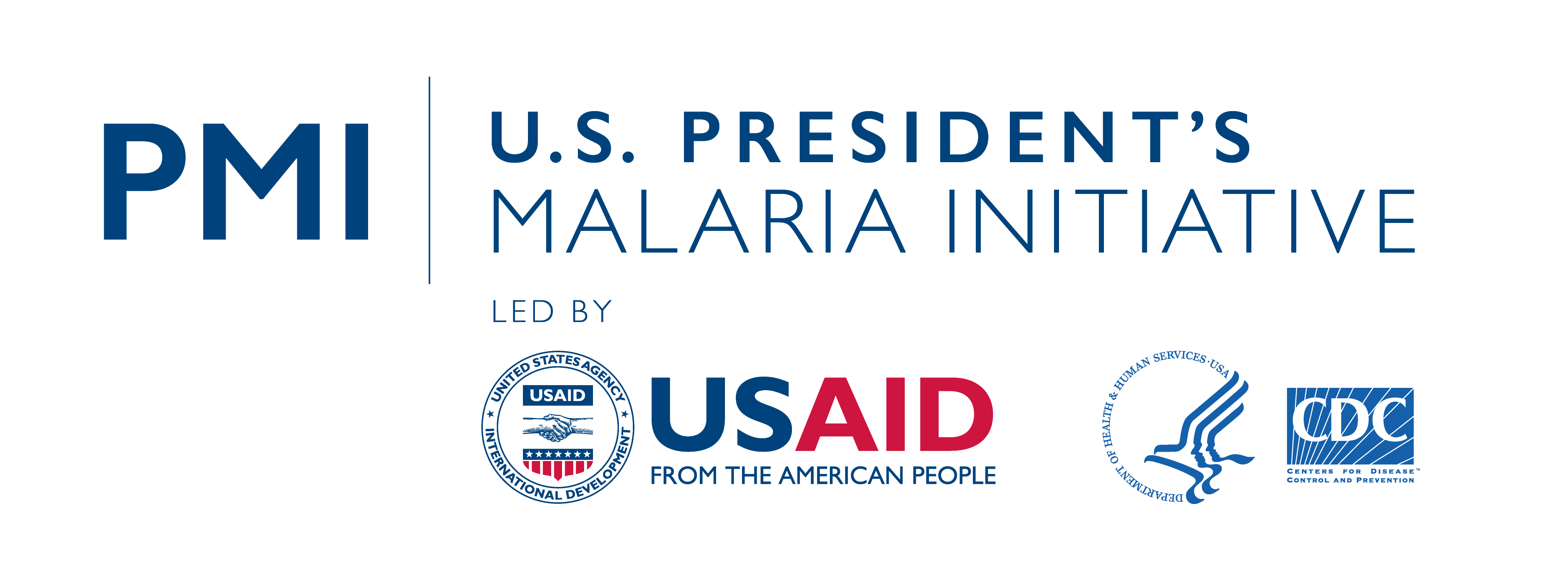
Photo Credit: Cambodia Entomology Manager Didot Prasetyo
Cambodia is progressing toward malaria elimination; there has been a significant reduction in malaria morbidity and mortality over the last 10 years. The overall malaria mortality rate has decreased from 0.98 per 100,000 in 2010 to 0.12 per 100,000 in 2014. No malaria deaths have been reported since 2017. Malaria cases in Cambodia are caused by Plasmodium falciparum, Plasmodium vivax, or a mix of both species and of the reported total malaria cases in last five years from 2016 to 2020, majority were Plasmodium (P.) vivax (62%). In 2020, there were 9,237 malaria cases (936 Plasmodium (P.) falciparum) detected by public health facilities and Village Malaria Workers (VMWs), a 71% decline from 2019, when 31,791 malaria cases (4,990 P. falciparum) were reported. The national malaria incidence in 2020 was 0.56 (0.05 for P. falciparum) among 1,000 population. In 2020, only 10% (936) of cases were P. falciparum or mixed infections compared to 16% in 2019 and 56% in 2017 (National Center for Parasitology, Entomology and Malaria Control 2020).
The National Strategic Plan for Elimination of Malaria in the Kingdom of Cambodia targets malaria elimination by 2025. The Malaria Elimination Action Framework for 2021-2025 describes new strategic updates based on recent changes in the country’s epidemiological and programmatic context. Foci investigations are identified as one of three key objectives of the surveillance program, which aims to determine the drivers of malaria transmission and trigger a targeted response. An intensified approach is required in endemic locations with highest risks, where mobile migrant populations and forest goers may be key to transmission.
Anopheles dirus, An. minimus s.l., and An. maculatus s.l. are the main malaria vectors in Cambodia. An. dirus is found in forested mountains and foothills, cultivated forests, and rubber plantations, whereas An. minimus s.l. is found outside the forests or in areas that have been cleared of forest. An. maculatus s.l. is found in hilly or mountainous areas and breeds in or near permanent or semi-permanent bodies of clean water such as streams or rivers (Sinka et al. 2011).
Entomological monitoring in Cambodia consists of two activities: (1) sentinel site longitudinal monitoring in locations where continuous malaria transmission is found, and (2) as a component of foci or outbreak investigations. Longitudinal monitoring activities include monitoring vector species abundance, biting behavior, infectivity rate and insecticide susceptibility testing. In 2021, longitudinal monitoring activities in Mondulkiri and Stung Treng provinces were jointly carried out by CNM and VectorLink Cambodia with financial support from PMI, and in Kampong Speu Province by CNM with financial support from Global Fund.
In year five (September 2022 – September 2023), the project’s primary objective is to support, in consultation with CNM, entomological surveillance in response to local malaria cases in the geographical areas with a high malaria burden. Emphasis is on helping Cambodia achieve its malaria elimination goals by strengthening foci investigations through entomological monitoring. Additionally, insecticide resistance monitoring, vector incrimination through molecular assays, and identification of members of primary malaria vector species existing as species complexes will be conducted. The project will develop local capacity to implement entomological surveillance, insecticide resistance monitoring, and molecular analysis of mosquito collections. It will also introduce the entomological monitoring data management module into the existing malaria information system.
Field Activities:
- VectorLink Cambodia will provide technical assistance to existing entomological surveillance in foci investigations in Mondulkiri and Stung Treng provinces during every other month and will support the introduction of HDNs, CDN and CDC LTs to the existing entomological monitoring system. The scope of entomological activities will be limited to the minimum required to inform an effective focus response, which is especially important in areas with limited resources but with many active foci. A component of the project’s effort in foci investigations will be to determine the essential entomological activities. VectorLink will analyze the applicability and sustainability of each of the complimentary entomological activities for the foci investigations, and develop recommendations from the lessons learned, to strengthen effective implementation in other provinces. These findings and capacity building will be an investment in the future prevention of reintroduction of malaria efforts of Cambodia.
- Conduct pyrethroid insecticide resistance testing in four sentinel sites (one forest and one village) in each of the target provinces.
- Continue on-site training and support to PHD and OD health staff on case-based entomological investigations as a component of foci investigations, particularly for mosquito trapping methods, handling, and processing mosquito samples in the field as well as training on Anopheles species identification supported by CNM.
- Train and support the CNM technicians in mosquito trapping methods, handling, and processing of mosquito samples in the field, morphological identification, and insecticide resistance testing data recording, entry and management, and reporting.
- Convene and support CNM to hold national Vector Control Working Group meetings by promoting the triangulation of existing entomological data, case prevalence data from the management information system (MIS), and insecticide resistance monitoring data, for an optimal response.
Insectary and Laboratory Activities:
- Rear F1 generation mosquitoes from forced oviposition of wild-collected malaria vectors at the CNM insectary for insecticide susceptibility tests.
- Maintain and expand the existing pinned reference collection of Anopheles Continue to develop a pictorial Anopheles species identification guide in Khmer and English for Mondulkiri and Stung Treng provinces.
- Work with CNM to label mosquito samples for storage and recording prior to in-country enzyme-linked immunosorbent assay (ELISA). A barcoding system for samples will be implemented with VectorLink home office guidance during this work plan period.
- Conduct circumsporozoite (CSP) ELISA in the National Institute of Health (NIH), National Institute of Allergy and Infectious Diseases (NIAID) laboratory at CNM, molecular species identification of all samples positive for CSP- ELISA and a subset of samples from each species first by conventional polymerase chain reaction (PCR) for primary vector species and sequencing for other vector species as needed in the genetics laboratory at laboratory at RUPP or alternate institution. In addition, VectorLink will support data recording, entry and management, and reporting.
- Support CNM laboratory capacity in molecular entomology work through international course, training, etc.
- Support developing capacity for species identification by sequencing and sequencing analysis at RUPP (or alternate institution)
Entomology Data Management and Use:
- Continue to support the customization and use of entomological modules in the national MIS that were started with support by VectorLink Cambodia in Year 4
- Support CNM to modify data collection, collation, and visualization of foci investigation data, if needed, as part of the process of integrating foci investigation entomological monitoring data into the existing MIS.
- Provide technical support to CNM on reporting and using vector control data for decision making at the national level.
- Facilitate review of entomological monitoring data by relevant parties to inform and improve integrated vector control decision making at the VectorLink l Dissemination Meeting as well as CNM-convened meetings (e.g., CNM Annual Conference) and other malaria stakeholder meetings.

